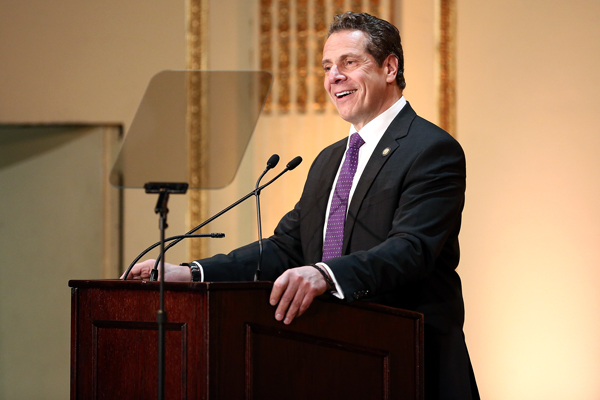Trending
Cuomo unveils 2018 budget priorities in wake of federal tax reform
“Washington hit a button and launched an economic missile and it says 'New York' and it’s heading our way”

In a Monday address in Albany highlighting his 2018 budget proposals, Gov. Andrew Cuomo said the state’s spending priorities had been shaped by federal tax reform and other potential threats from Washington, D.C.
Chief among them is the loss of federal tax deductions for state and local taxes, or “SALT,” which Cuomo said would cost New Yorkers an extra $14 billion. “The main issue in the budget is not the budget. The main issue in the budget is about the SALT deductions,” he said. “Washington hit a button and launched an economic missile and it says ‘New York’ and it’s heading our way.”
As one remedy for ringing more revenue out of an increasingly squeezed tax base, Cuomo said he is considering a new employer-paid income tax on wages, a replacement for state income tax that is currently paid by wage earners. The state’s tax department will release a study on the proposal on Wednesday.

Employer-paid payroll tax proposal (Credit: Office of Governor Andrew Cuomo)
But the loss of local property tax deductions, which along with other local and state taxes are now capped at a combined $10,000 annually, are an even bigger problem for the state than income tax, Cuomo claimed. Despite this, he proposed no such measure as bold as the payroll tax. Instead, he suggested local governments, which levy property taxes, could look into setting up new charitable funds for public services such as healthcare or schools and in turn issue tax credits to New Yorkers who make donations to them. Such measures are also being discussed in neighboring New Jersey, but could be overruled by the Internal Revenue Service.
Among Cuomo’s proposals to increase revenue for his $168 billion budget were new surcharges on opioid manufacturers, a deferral on some corporate tax credits and a plan to close the carried interest loophole. The latter would require the cooperation of neighboring states and potentially return $1 billion to the New York treasury in a given year, Cuomo said. He also proposed keeping the STAR property tax credit, that mostly benefits middle- and lower-income homeowners, at its current levels, instead of following a planned 2 percent increase.
The presentation also touched on New York City’s woebegone subway system. Cuomo reiterated that $836 million in short-term rescue funding already pledged to the MTA should be 50 percent paid by the state and 50 percent paid by New York City. He said later this week his office would release a long-term plan called “Fix NYC” that includes a congestion pricing plan for commuters driving to different zones of New York City. “It has to be fair to all people and all industries,” he said.
The governor additionally said that a payroll mobility tax that already goes the state should instead go directly to the MTA.
Critics of Cuomo argue that his portrayal of the loss SALT deductibility effects on New York is greatly exaggerated. E.J. McMahon, research director at the conservative Empire Center for Public Policy, said in tweet during the Monday presentation that the governor’s “continued insistence on hyping the impact strains credulity.”




